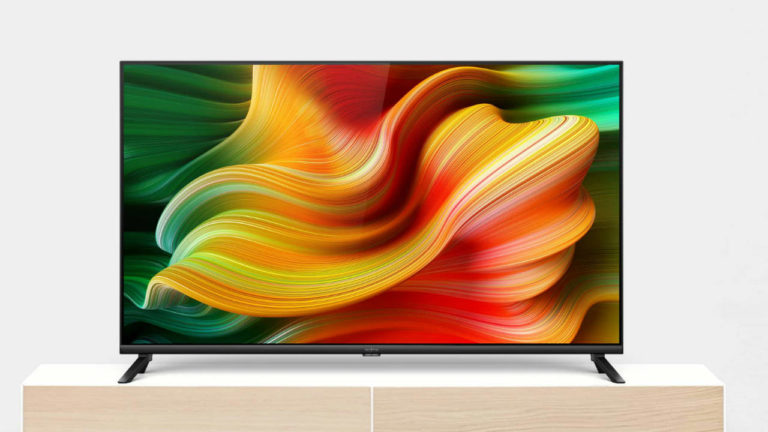Purchasing a television might be a difficult decision these days. With the amount of technology that a TV contains, from resolution to multiple HDR standards, refresh rate and OSes, there are numerous factors to consider, not to mention the appropriate screen size for you. Unlike a smartphone, a TV is a gadget that can serve you for almost a decade before needing a replacement. As a result, it is critical that you get the appropriate television for your requirements. If you’re in the market for a new television, here are five things you should think about before making a buying decision.
SCREEN SIZE
The most significant factor to consider is the TV’s screen size. If you have a large space, you should select a larger screen size for a more cinematic experience. A large screen in a small room, on the other hand, can make content consumption uncomfortable. As a result, make sure you set a comfortable distance away from the television. Divide the size of the TV by 10 to determine the minimum viewing distance for specific screen size. As a result, the minimum viewing distance for a 55-inch television is 5.5 feet. It’s 6.5 feet for a 65-inch. The minimum viewing distance for a 75-inch TV should be 7.5 feet. You get the idea. Anything closer can make for an uneasy viewing experience. Keep in mind that this is the shortest viewing distance. You can always go back further.
RESOLUTION
Unless you’re looking at a 32-inch or 40-43-inch TV, we recommend going with a 4K TV. There is a wealth of 4K videos available through streaming services. Some TV manufacturers do a fantastic job of upscaling 1080p and even 720p material to provide you a good viewing experience. For lower screen sizes, such as 43 inches or below, 1080p is a decent alternative. It’s pointless to buy in an 8K TV right now. Not only are they too expensive, but there is no 8K video available on streaming providers. While there is some 8K video on YouTube, don’t expect to be able to watch your favorite movie in 8K on Prime Video anytime soon. In a nutshell, opt for a 4K. It’s too early for 8K, and FHD is only available on screens 43 inches and smaller.
HDR
High Dynamic Range is an abbreviation for High Dynamic Range. In terms of colors, contrast, and brightness, it simply gives you a richer content consumption experience. There are several HDR standards, but Dolby Vision is the one to look out for. This is Dolby’s HDR standard, which is supported by a wide range of televisions. HDR 10 is an open standard that may be seen on a growing number of televisions. So, if you can, try to get a TV with Dolby Vision. Many TVs tout HDR as a unique selling point, however, many inexpensive TVs give a disappointing HDR experience. So, before you buy a TV, attempt to figure out what its maximum brightness is. For an acceptable HDR experience, a minimum of 400 nits of brightness is required.
OS
Almost all televisions today are Smart TVs, and they operate on the same operating system as your phone. There are a few widely used operating systems. LG has its own WebOS operating system, Samsung has Tizen, and most other TV manufacturers, including Sony, Redmi, Mi, OnePlus, TCL, and others, use Google’s Android TV UI. Some companies, such as Xiaomi, OnePlus, and others, offer their own UI that runs on top of Android TV. These operating systems essentially allow you to connect your television to the internet and watch content from streaming services such as Netflix, Prime Video, Disney+ Hotstar, and others without the use of an external device. Many of these smart TVs can be managed via Google Assistant or Alexa-enabled smart speakers. Almost all TVs running these major OSes come with a voice-activated remote control, which allows you to control the TV just by speaking. From the comfort of your couch, you can operate your Google Assistant or Amazon Alexa-enabled smart lighting and security cameras. Your smart TV may, without a doubt, serve as a central hub for all of your smart linked gadgets.
CONNECTIVITY
The networking options are last but not least. Make sure your TV has at least three HDMI ports for connecting devices like your set-top box, game console, and more. If you want to connect your TV to a soundbar or a home theatre system, be sure it has an HDMI ARC or eARC connector. Audio Return Channel is abbreviated as ARC, and Enhanced Audio Return Channel is abbreviated as eARC. HDMI 2.1 is a new HDMI protocol that some TVs support. If you want a TV that will last into the future, look for this. There are also other connectivity options available, such as an optical audio port and a 3.5mm AUX connector on select models. TVs also have USB ports, allowing you to watch content from a flash drive. They also have Bluetooth capabilities. You have access to Wi-Fi as well as an ethernet connector to connect to the internet. That was a fast rundown of five things to think about when buying a television.
Follow Crispbot on Facebook and Twitter. For the latest news, tech news, breaking news headlines, and live updates checkout crispbot.com













